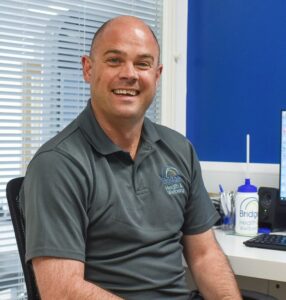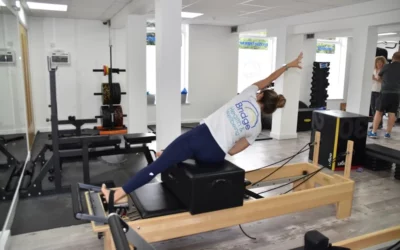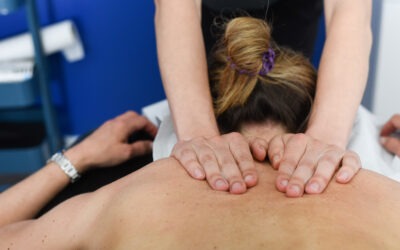What is osteoarthritis of the knee, and how can it be treated?
Over the ends of any bone that forms a joint (articulates) with another bone, we find shiny white cartilage that we call articular cartilage. As part of the ageing process, being active and/or maybe having injuries at certain times in our lives, we can potentially damage the articular cartilage. Unfortunately, the cartilage has next to no blood supply, so it cannot heal itself like our skin. With time this damage can go from being very mild and develop into something more significant and, depending on where the damage is, can start to become symptomatic.
We grade the progression of osteoarthritis of the knee using a 4-grade scale. Although grade 4 can look very bad, sometimes a patient with these changes actually has very little pain. Conversely, patients with grade 2 or 3 changes can really struggle, so it is important that we assess you fully as well as get any investigations.
Examination
If we are just looking for osteoarthritis, then usually an X-ray is sufficient, but if we suspect early changes (grade 2) with maybe a meniscal tear, then an MRI would be used as well. This should give us clear information on what is going on within your knee. This must be backed up with a full clinical examination.
The joint space is actually the cartilage that cannot be seen on the X-ray, so as that wears away, the joint space reduces.
Symptoms
The symptoms of osteoarthritis of the knee can vary, but on the whole, you will experience the following:
- Pain – especially when loading the knee itself, so walking long distances and going up and down the stairs can become a real issue. You may also experience pain at night, which affects your sleep.
- Stiffness – the joint may feel stiff, especially first thing in the morning or after sitting for a long period
- Swelling – you may be aware of the knee swelling at different times depending on what you have been doing
- Reduced activity – due to the pain, you may not be going out or using the stairs and are generally less active
- Graunching – you may be aware of the joint graunching, clicking and cracking at times
Treatment options
The good news is there is a long list of potential treatment options for osteoarthritis of the knee. You should always look to start conservatively through a physiotherapist who can provide a full assessment and, if required, look to get some further investigation (Xray) via your GP or a specialist. Physio will involve providing information and guidance on things like weight loss, orthotics, activity management and, most importantly, putting together a structured exercise plan to help get the knee and you fitter and stronger.
Sometimes we do have to add more invasive techniques and even surgery to the treatment plan. These can include:
- Corticosteroid injection – this is basically a very strong anti-inflammatory that is injected directly into the joint with the aim of reducing any inflammation and, therefore, pain.
- Hyaluronic acid (HA) injections – HA naturally occurs within our joints and helps with lubrication. Unfortunately, with knee OA we produce less HA so the idea is to increase the HA levels via injection.
- A uni-compartmental knee replacement (UKR) & total knee replacement (TKR)
- (UKR) – if only one compartment of the knee is affected, usually the medial side, then you can have a UKR. This is a great option as the surgery is less invasive and leaves more of your normal anatomy in place.
- (TKR) – if there is widespread change within the knee and you have not responded to the conservative methods then a TKR will be the next option. This involves cutting away the end of the thigh bone (femur) and the top of the shin bone (tibia) and replacing them with new metal components. They put a small plastic spacer between the new components to act as a new “cartilage”. If required, you can also have the back of the kneecap (patella) replaced
If you have knee pain or osteoarthritis of the knee is having an impact on your daily life and activity, please get in touch. The team at Bridge Health & Wellbeing have a great deal of experience treating many knee conditions. To speak to our physiotherapist Paul or book your physiotherapy appointment at our health and wellness centre on Bridge Street in Christchurch, Dorset, please contact us on 01202 473800 or email info@bridgehw.com.
 Paul O’Connell (MSC, BSC, HCPC, MCSP) is a physiotherapist with two decades of clinical expertise. He has worked right across the UK, from North Yorkshire and London to Hampshire and Dorset. Sports medicine is one of his areas of special interest: he has worked both on the touchline and in sports injuries clinics and lectured on the Sports Therapy programme at Bournemouth University. Having spent several years managing physiotherapy and health assessment teams in two key Nuffield Health hospitals, Paul also has an extensive understanding of orthopaedic surgery.
Paul O’Connell (MSC, BSC, HCPC, MCSP) is a physiotherapist with two decades of clinical expertise. He has worked right across the UK, from North Yorkshire and London to Hampshire and Dorset. Sports medicine is one of his areas of special interest: he has worked both on the touchline and in sports injuries clinics and lectured on the Sports Therapy programme at Bournemouth University. Having spent several years managing physiotherapy and health assessment teams in two key Nuffield Health hospitals, Paul also has an extensive understanding of orthopaedic surgery.



